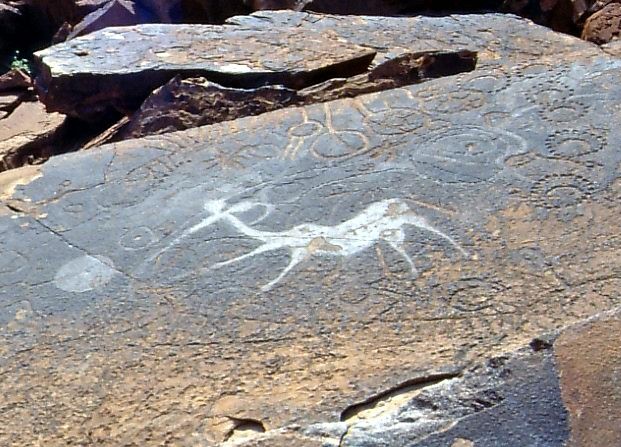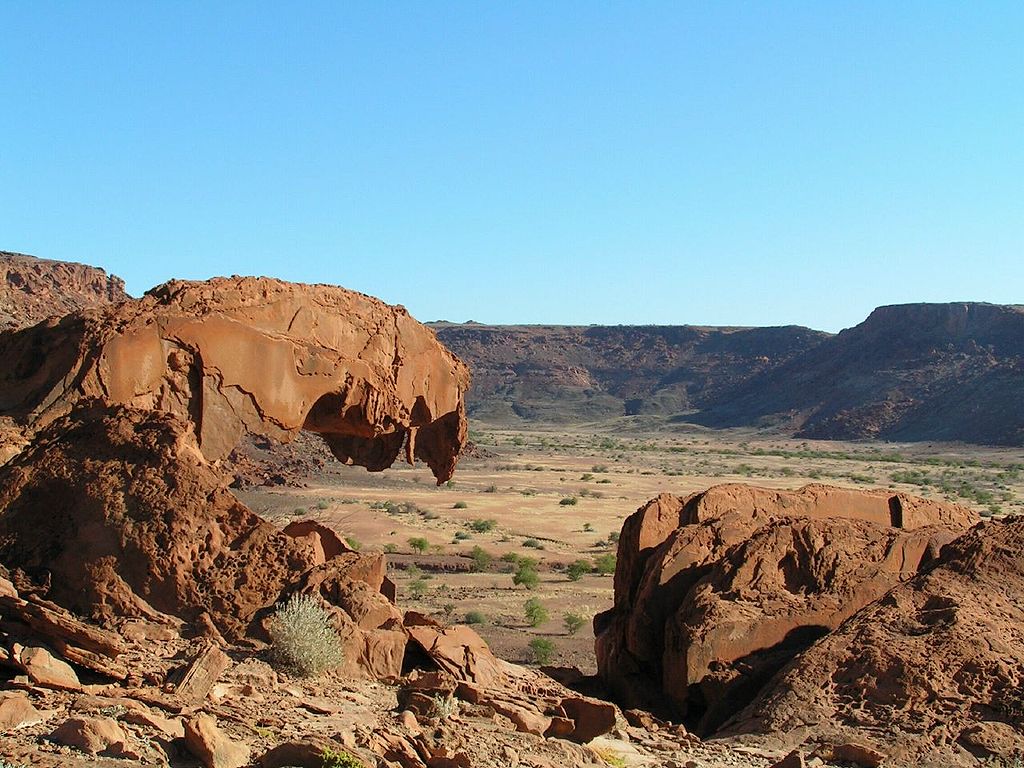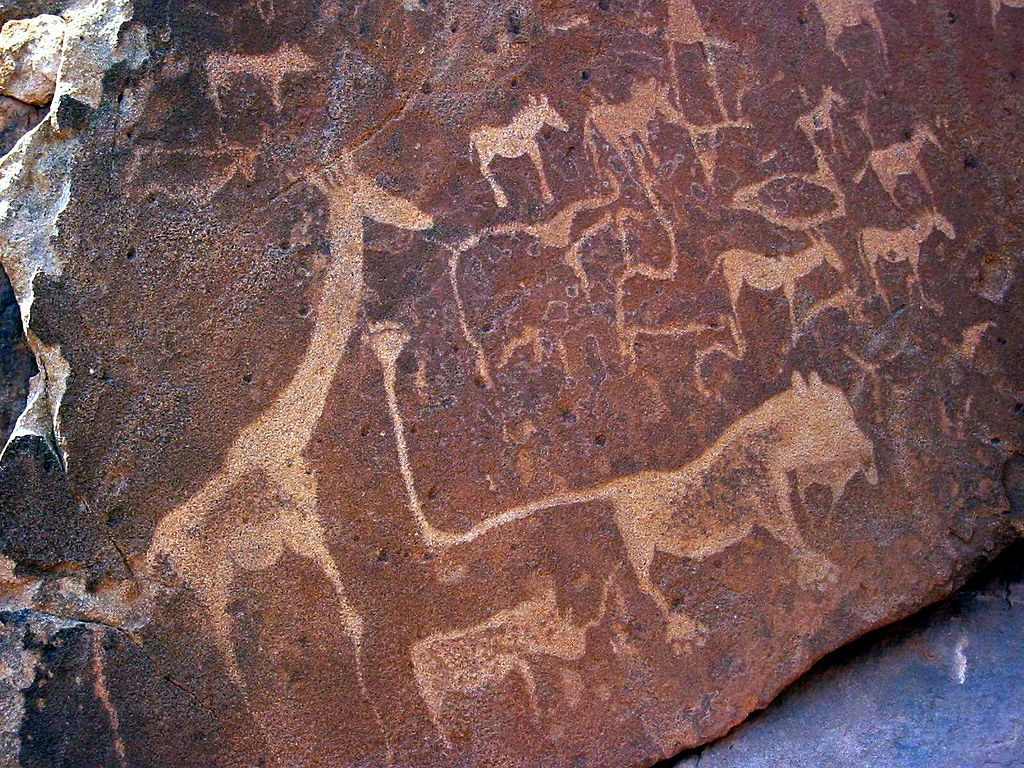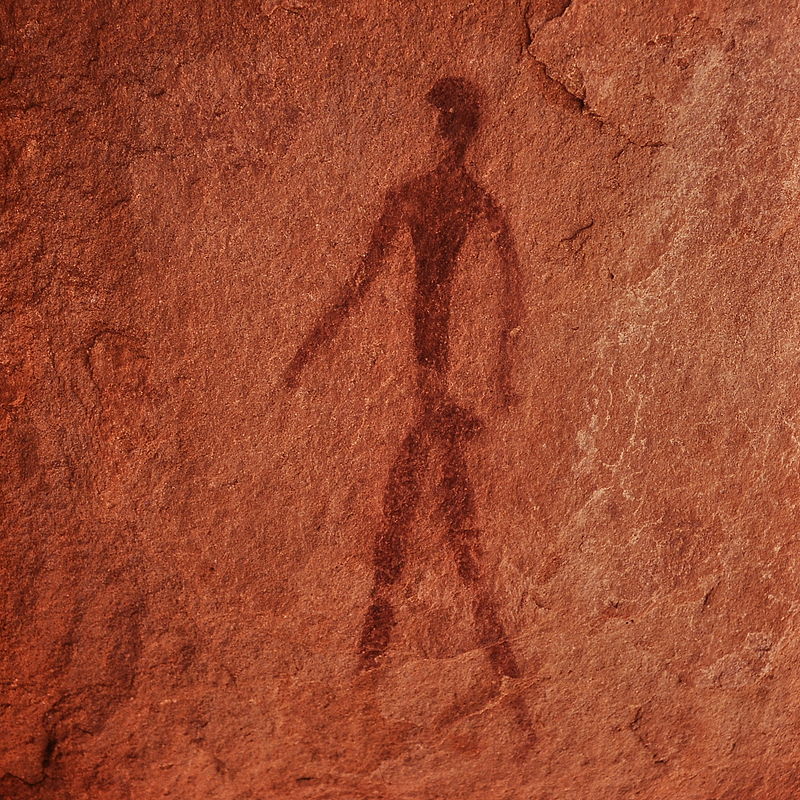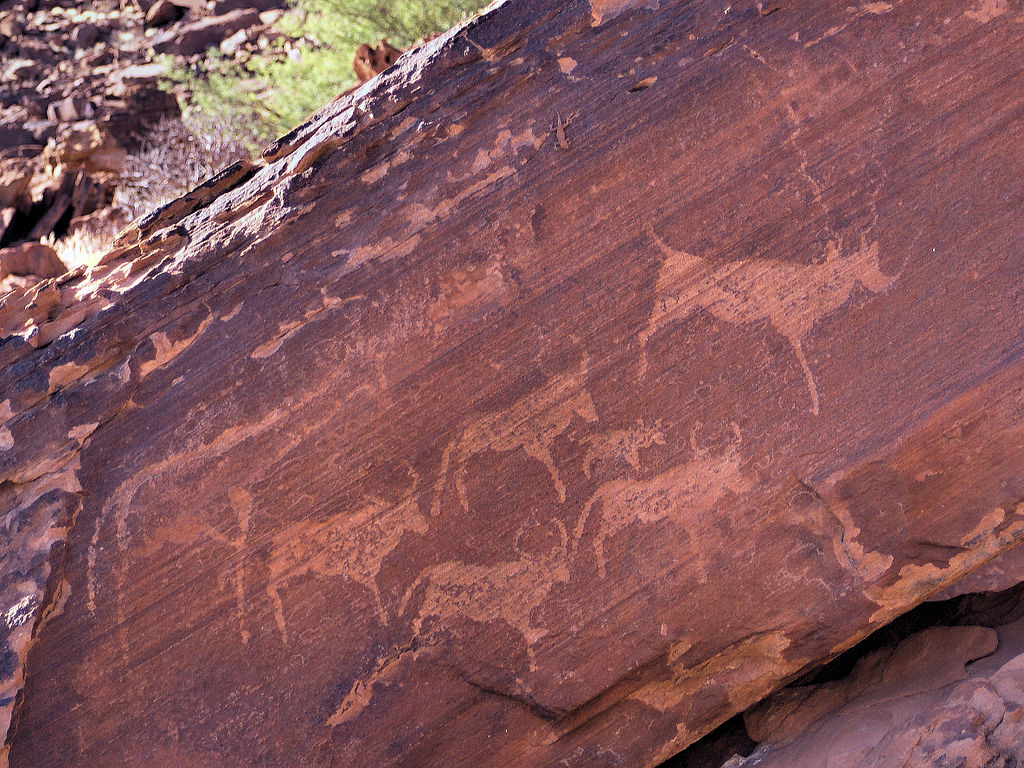Twyfelfontein
Twyfelfontein (Afrikaans: uncertain spring), officially known as ǀUi-ǁAis (Damara/Nama: jumping waterhole), is a site of ancient rock engravings in the Kunene Region of north-western Namibia. It consists of a spring in a valley flanked by the slopes of a sandstone table mountain that receives very little rainfall and has a wide range of diurnal temperatures.
The site has been inhabited for 6,000 years, first by hunter-gatherers and later by Khoikhoi herders. Both ethnic groups used it as a place of worship and a site to conduct shamanist rituals. In the process of these rituals at least 2,500 items of rock carvings have been created, as well as a few rock paintings. Displaying one of the largest concentrations of rock petroglyphs in Africa, UNESCO approved Twyfelfontein as Namibia's first World Heritage Site in 2007.
Artworks
Sandstone rocks at Twyfelfontein are covered by the so-called desert varnish, a hard patina that appears brown or dark grey. Engravings were effected by chiseling through this patina, exposing the lighter rock underneath. The indentations were created over the course of thousands of years. The oldest engravings might be as old as 10,000 years, and the creation of new works probably ended by the arrival of pastoral tribes around 1000 AD. Three different types of engravings can be distinguished at Twyfelfontein:
- iconic imagery (images of animals, humans, and fantasy creatures)
- pictograms (geometric rock art like pecked circles, rows of dots)
- indentations for or from everyday use (grinding hollows, board games, gong stones)
Additionally, the site contains rock paintings at 13 different locations, with depictions of humans painted in red ochre in six rock shelters. The similar occurrence of rock paintings and rock engravings is very rare.
The carvings represent animals such as rhinoceroses, elephants, ostriches and giraffes as well as depictions of human and animal footprints. Some of the figures, most prominently the "Lion Man"—a lion with an extremely long rectangular kinked tail ending in a six-toed pugmark— depict the transformation of humans into animals. This transformation and the depiction of animals together with their tracks make it likely that they were created as part of shamanist rituals. The more simplistic perception that they only show hunter-gatherers' attempts to acquire food is now thought to be naïve.
Engravings of animals that certainly never occurred in this area, like a sea lion, penguins, and possibly flamingos indicate that the hunter-gatherers might have had contact with the coast more than 100 km (62 mi) away. A modern archaeological survey led by Sven Ouzman questions these descriptions of Scherz' initial investigation and describes the not easily recognisable fauna as "strange animals"—rough work of animals, possibly giraffe, that did occur at Twyfelfontein.
The Khoikhoi herders produced the geometric imagery, probably depicting herder groups. They are also the creators of the more worldly indentations in that area that served as grinding hollows and game boards. Some of the stones bear marks from use as gong stones; they make unusual sounds when hit.
Read more: https://en.wikipedia.org/wiki/Twyfelfontein
This page uses materials from Wikipedia available in the references. It is released under the Creative Commons Attribution-Share-Alike License 3.0.
References